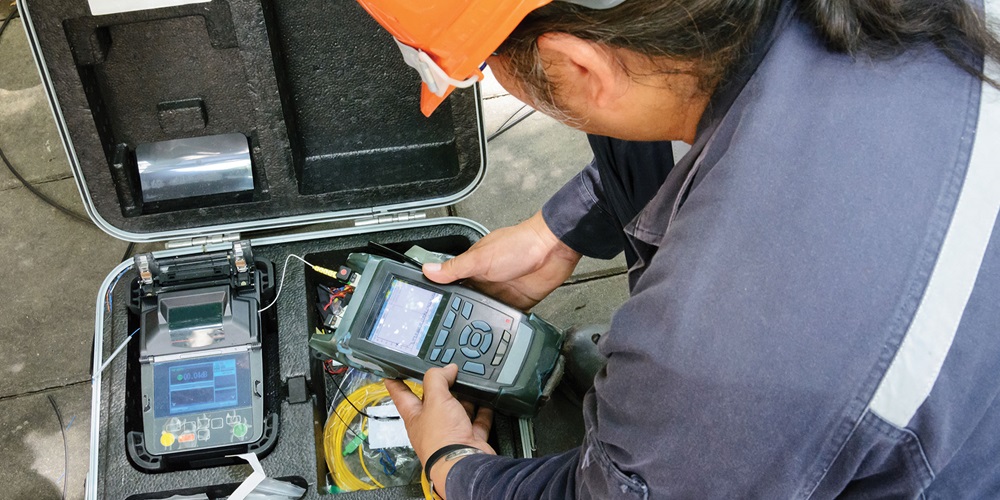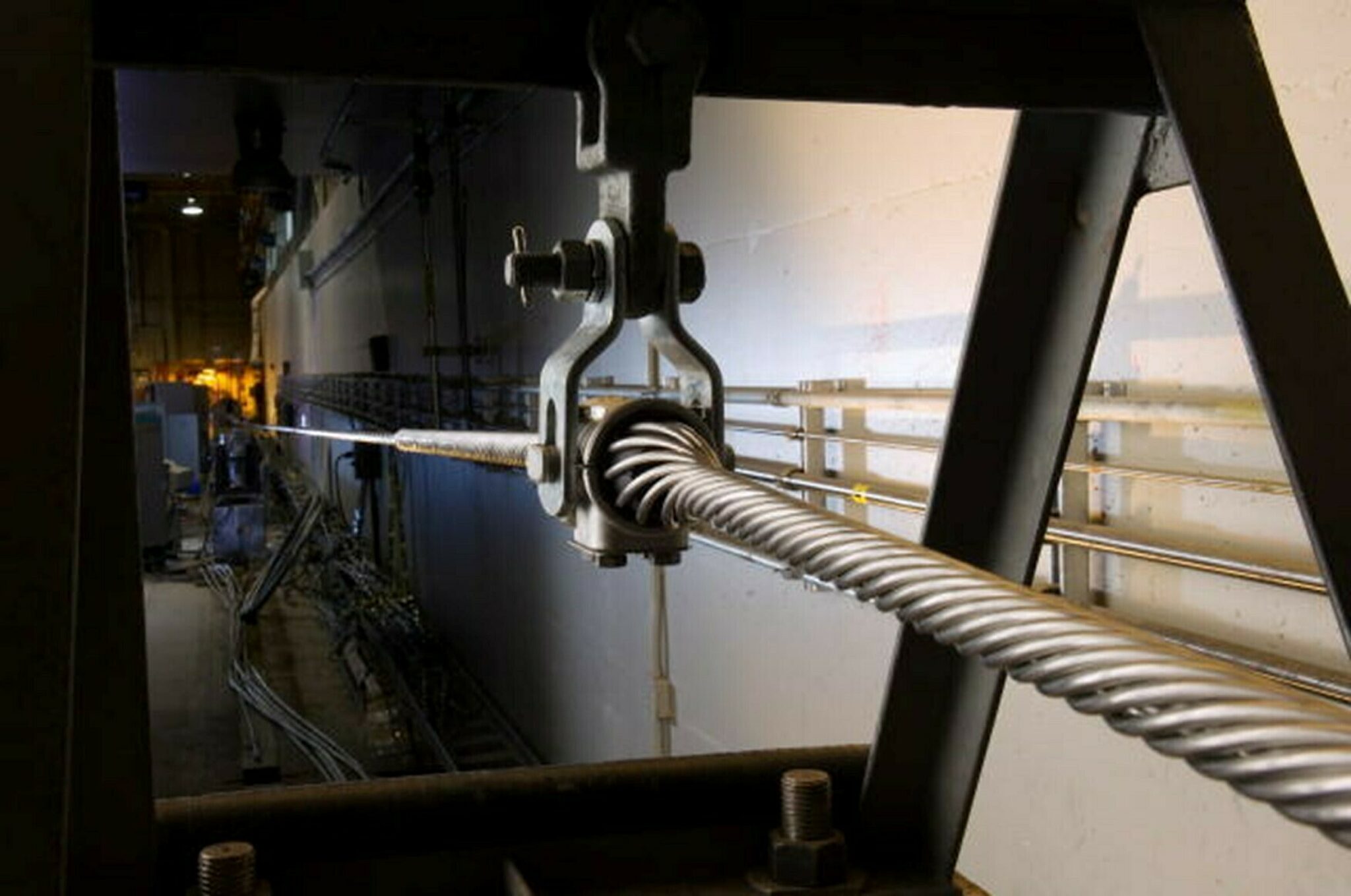Learn about the latest advancements in ofda solutions for precise fibre analysis.
Learn about the latest advancements in ofda solutions for precise fibre analysis.
Blog Article
Discover the Relevance of Optical Fiber Testing in Modern Telecommunications
In the realm of modern-day telecoms, the relevance of optical fiber screening can not be overemphasized, as it offers as the foundation for ensuring network reliability and performance. What are the particular advantages that normal screening deals, and how might it form the future landscape of telecoms?

Comprehending Optical Fiber Screening
Optical fiber testing is a crucial process in telecoms that ensures the stability and performance of fibre optic networks. This screening encompasses a variety of procedures created to review the physical and functional characteristics of optical fibers - robotic vision. Secret specifications evaluated include optical power loss, data transfer capacity, and fault location, which are essential for maintaining high-grade communication links
The testing procedure usually includes making use of specialized tools such as Optical Time-Domain Reflectometers (OTDR) and Optical Power Meters. OTDRs are used to recognize and define mistakes, entwines, and ports within the fibre, while power meters measure the transmitted light signal strength to establish performance.
Furthermore, testing is performed at different phases, including throughout installment, upkeep, and troubleshooting, to make certain that the network meets sector standards and operational needs. Conformity with requirements established by companies like the International Telecommunication Union (ITU) and the Telecommunications Market Organization (TIA) is paramount.
Advantages of Routine Examining
Regular testing of optical fibres returns many advantages that substantially boost network integrity and performance. One of the main benefits is the early discovery of possible concerns, such as breaks or destruction in the fibre, which can result in pricey downtime if left unaddressed (robotic vision). By identifying these issues proactively, telecoms companies can lessen service disturbances and ensure constant connection for their customers
Furthermore, routine screening helps to maintain the honesty of signal top quality. As optical fibres age, their efficiency can be affected by factors such as environmental conditions and physical tension. Routine assessments enable the monitoring of signal loss and overall transmission efficiency, guaranteeing that the network operates at optimal degrees.
An additional significant benefit is compliance with sector standards. Normal testing sustains adherence to regulatory demands, thus minimizing legal and economic risks associated with non-compliance. In addition, it improves the total lifespan of the fiber infrastructure by assisting in prompt maintenance and fixings.

Common Checking Approaches
Testing optical fibers utilizes numerous approaches to make sure the honesty and efficiency of telecommunications networks. Among the most typical strategies is Optical Time Domain Name Reflectometry (OTDR), which assesses the entire length of the fibre by sending out a pulse of light and measuring the reflections triggered by flaws or breaks. This technique gives thorough info concerning the area and extent of faults.
Another prevalent method is the usage of Optical Power Meters, which measure the amount of light transmitted through the fibre. This technique helps figure out the loss of signal strength, ensuring that it fulfills industry requirements. Furthermore, Visual Fault Locators (VFL) are navigate here used to recognize breaks or severe bends in the fibre by forecasting a visible laser light into the cord.
Insertion loss testing is likewise critical, as it quantifies the loss of signal power arising from links and entwines within the network. The usage of Polarization Setting Dispersion (PMD) testing analyzes the influence of fiber characteristics on signal honesty.
Each of these techniques plays an important role in keeping the efficiency and dependability of optical fibre networks, ultimately adding to smooth telecommunications procedures.
Effect On Network Performance
The stability and performance of optical fibre networks directly affect general network performance. In contemporary telecommunications, the performance of data transmission relies greatly on the high quality of the optical fibers used. Any destruction in the fibre's problem-- whether due to physical damages, contamination, or excessive bending-- can bring about enhanced depletion and signal loss, significantly affecting data stability and rate.
Routine optical fiber testing is vital to recognize and correct possible problems before pop over to this web-site they materialize as network failings or slowdowns. Methods such as Optical Time Domain Reflectometry (OTDR) and insertion loss testing make it possible for technicians to determine the efficiency of fiber links precisely. These examinations not just evaluate the physical condition of the fibers yet also make certain compliance with sector requirements, therefore safeguarding the network's dependability.
Additionally, a well-kept optical fiber network adds to minimized functional prices and enhanced consumer fulfillment, as end-users experience less disruptions and higher information prices. Ultimately, the emphasis on extensive optical fibre screening techniques functions as a cornerstone for sustaining robust telecoms framework, guaranteeing that provider can meet the growing demands for data transfer and connection in today's digital age.
Future Patterns in Examining
As we look ahead, improvements in technology are positioned to improve optical fiber testing in telecoms. The surge of automation and expert system (AI) is anticipated to improve the effectiveness and precision of screening procedures. Automated screening systems can perform comprehensive evaluations with very little human treatment, dramatically minimizing the capacity for errors and expediting time-to-deployment.
Moreover, the integration of artificial intelligence formulas will certainly make it possible for anticipating maintenance, enabling network service providers to anticipate possible problems before they intensify into failures. This proactive approach not their website only enhances network dependability but additionally maximizes functional expenses.
One more arising trend is the development of portable testing tools that offer real-time evaluation - ofda. These tools will empower service technicians to execute on-site diagnostics swiftly, helping with quicker resolutions and improving solution top quality
The development of 5G networks even more demands the advancement of testing methods. As bandwidth needs increase, standard testing methods might no much longer suffice. Innovative options such as optical time-domain reflectometry (OTDR) and progressed spectral analysis will certainly become crucial in making certain the honesty and efficiency of high-speed links.

Conclusion
In final thought, optical fibre screening is essential for ensuring the stability and reliability of contemporary telecommunications networks. Regular screening techniques not only assist determine potential issues such as signal loss and mistakes yet also add to improved network efficiency and consumer complete satisfaction. As the demand for smooth connection remains to expand, the fostering of advanced testing techniques will play a critical role in maintaining top notch network criteria and sustaining the evolving landscape of telecoms.
Report this page